When the Grass Is Greener: 10 Best Grass Types for Your Lawn
For a lush lawn, consider climate, soil, water, and sunlight


A lush yard doesn’t just look nice. Feeling soft grass under your feet can help you relax at the end of the day, and kids will make memories running through the vibrant green yard all summer long. But achieving a healthy lawn involves more than mowing to the right height or knowing how to water grass on schedule. It all comes down to finding the best grass type for your yard. Here are 10 popular types of grass for lawns, with the pros and cons of each.
1. Kentucky Bluegrass

One of the softest types of grass, Kentucky bluegrass is a popular choice for those in the northern U.S., around hardiness zones 2 through 7. Despite the name, this grass presents a deep vibrant green that maintains its hue throughout the colder weather. In the heat of summer, keep up on watering, as drought will quickly make it go dormant.
Key Facts
Type: Kentucky bluegrass is a cool-season grass.
Region: This type of grass fares best in cooler, northern climates. It’s native to North America, Asia, and Europe.
Care Tips
Soil: It needs neutral soil with a pH of 6.5–7. If soil tests show more alkalinity or acidity, use fertilizer to help this grass thrive.
Sunlight: Kentucky bluegrass loves sunlight but will tolerate some shade.
Mowing: Let this grass grow a little taller, mowing it to about 2 1/2 inches high to protect the shallow roots better.
Traffic: This type of grass tolerates light to moderate foot traffic.
Best for: Barefoot-friendly yards
2. Tall Fescue Grass

While it’s suitable for the same hardiness zones as Kentucky bluegrass (zones 2 to 7), tall fescue grass can tolerate less favorable growing conditions, making it ideal if you don’t have much of a green thumb. It can also grow in transitional regions that work for both cool- and warm-weather plants.
Key Facts
Type: Tall fescue grass is a cool-season grass and it’s sometimes considered transitional as well.
Region: Native to Europe, tall fescue grows best in northern regions.
Care Tips
Soil: This hardy grass will tolerate most types of soil, ideally with a pH of 5.5–7.5.
Sunlight: The grass prefers partial shade to full sunlight.
Mowing: Mow tall fescue to about 3–4 inches high.
Traffic: Tall fescue has deep roots and grows in clumps, making it durable in high foot traffic. Go ahead, kick off your shoes, and run through the lawn!
Best for: Low-maintenance, high-traffic lawns
3. Zoysia Grass
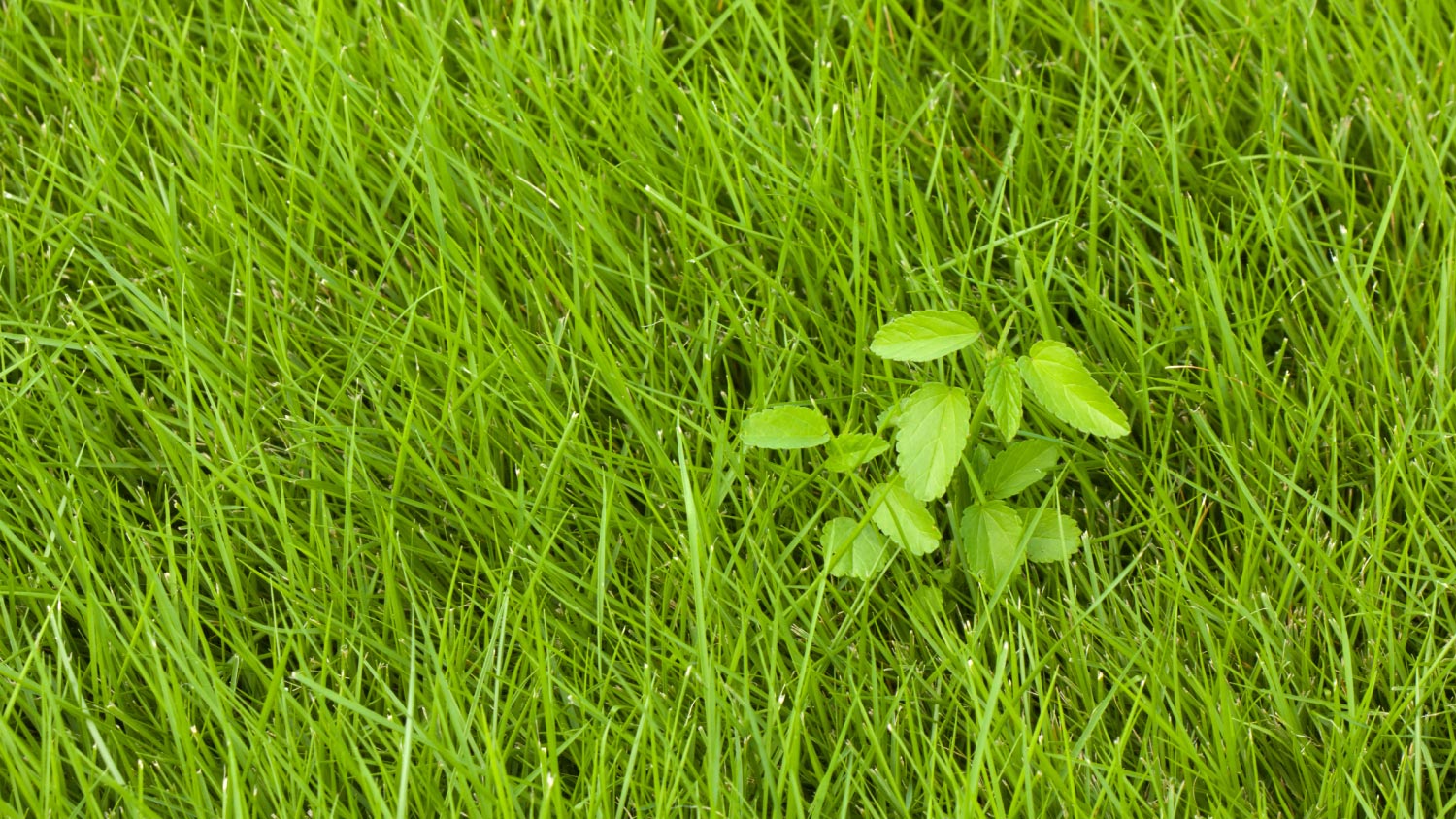
If you’re lawn-obsessed, zoysia grass is for you. Ideal for transitional areas, this grass requires a little more attention and care, but the rewards (thick, bright-green grass) speak for themselves. It tolerates drought or regular watering, shade, or sun, but regular mowing is a must. This type of grass also looks best with well-manicured lawn edging.
Key Facts
Type: Zoysia is a transitional grass seed that grows in hardiness zones 6–9.
Region: Zoysia can grow in the north but will require more sun, or in the south with partial shade and regular irrigation.
Care Tips
Soil: Keep soil slightly acidic with a pH of 5.8–6.5.
Sunlight: This grass prefers full sun, especially in northern regions, but also tolerates partial shade.
Mowing: Clip zoysia to a height of about 1 1/2–2 inches.
Traffic: Your family can enjoy running, rolling, and playing in zoysia, which tolerates high traffic.
Best for: Curb appeal
4. Buffalo Grass
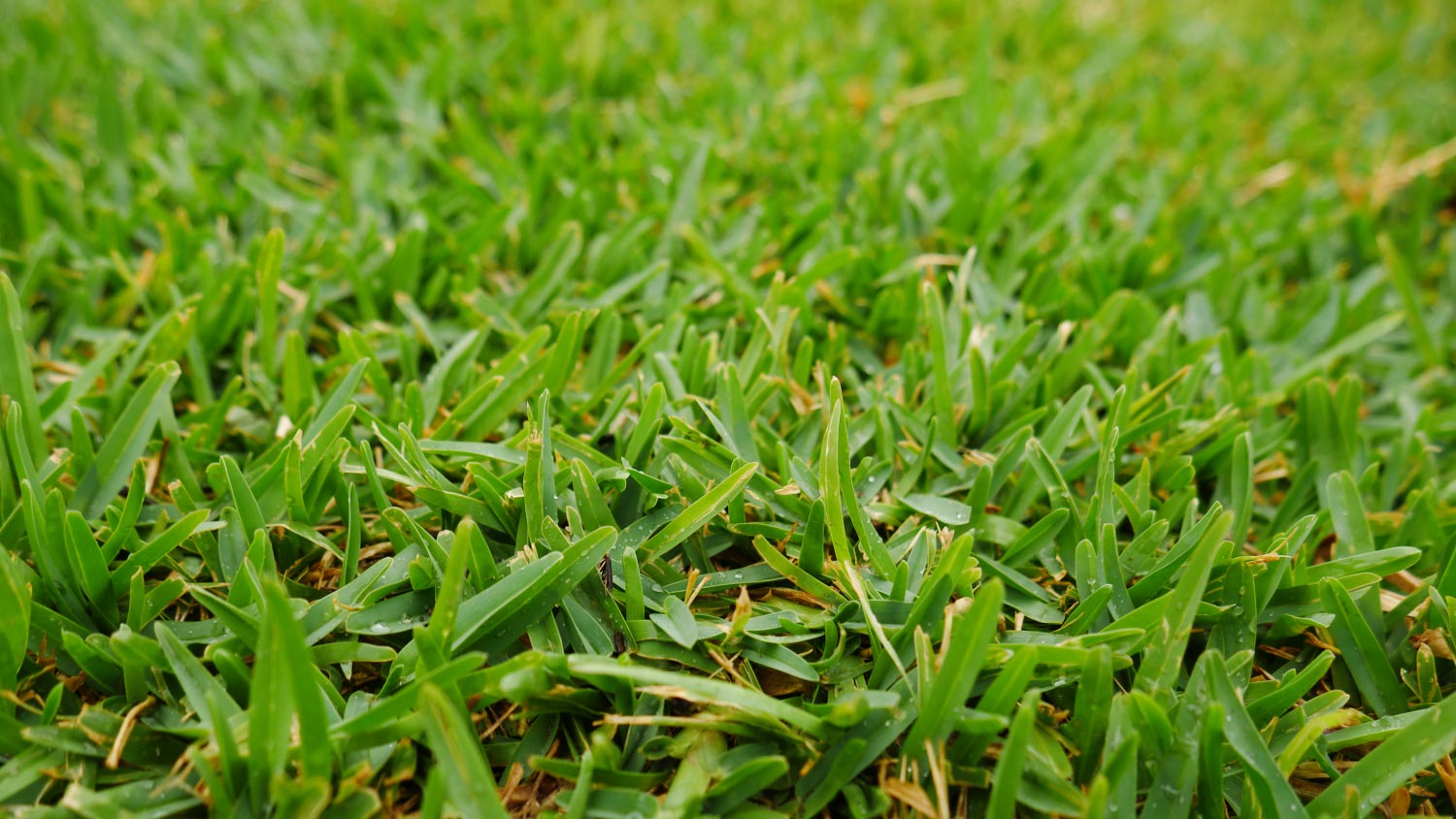
Another transitional pick, buffalo grass is a durable option for lawns plagued by drought. It needs little in the way of mowing, so you’ll spend less time sweating and pushing the mower around this summer. It might not be as bright green as some other grass types, but it offers a more natural look that pairs well with ornamental grasses and wildflowers.
Key Facts
Type: Buffalo grass is a transitional grass type that grows best in zones 4 and higher.
Region: This grass is native to the Great Plains and works mostly in warm regions with some tolerance in cooler climates.
Care Tips
Soil: Maintain a soil pH of 6–7.5.
Sunlight: Seed buffalo grass in sunny areas, as it doesn’t tolerate shade very well.
Mowing: Untouched, this grass will grow up to 10 inches high. If wilderness isn’t the look you’re going for, aim for 2–3 inches in height.
Traffic: Tread lightly, as buffalo grass doesn’t tolerate much foot traffic.
Best for: Yards with a natural look
5. St. Augustine Grass

A popular choice in the South, St. Augustine grass is a warm-season grass that needs little care. It features a coarse texture and offers thick coverage for your lawn. Although this southern grass can handle a lot of heat and even salty or sandy soil, it still needs plenty to drink to look its best.
Key Facts
Type: St. Augustine is a warm-season grass.
Region: This type of grass grows primarily in southern coastal regions, like in south Texas and throughout Florida.
Care Tips
Soil: This grass withstands sandy soil and prefers a soil pH of 5–8.5.
Sunlight: The grass will tolerate moderate shade to full sunlight.
Mowing: You won’t spend much time mowing this grass, but when you do mow, keep it to a height of 2–3 inches.
Traffic: St. Augustine looks best with light foot traffic.
Best for: Coastal locations
6. Bahia Grass

For a primarily pest- and disease-resistant grass that can also stand up to harsh growing conditions found in the southeastern U.S., Bahia grass is a good choice. It’s also ideal for homeowners who don’t want to spend hours toiling over their lawns, as this grass type grows slowly and requires little water or additional nutrients.
Key Facts
Type: Bahia grass is a warm-season option for your lawn.
Region: You’ll find Bahia in the southern U.S., including coastal regions.
Care Tips
Soil: Keep soil pH at 5.5–6.5 to prevent the grass from yellowing.
Sunlight: This grass prefers full sun and can withstand moderate shade.
Mowing: Mow Bahia grass to about 2–3 inches. It goes dormant in winter, so no mowing is required.
Traffic: Bahia grass can bounce back from moderate foot traffic.
Best for: Drought-prone areas
7. Bermuda Grass
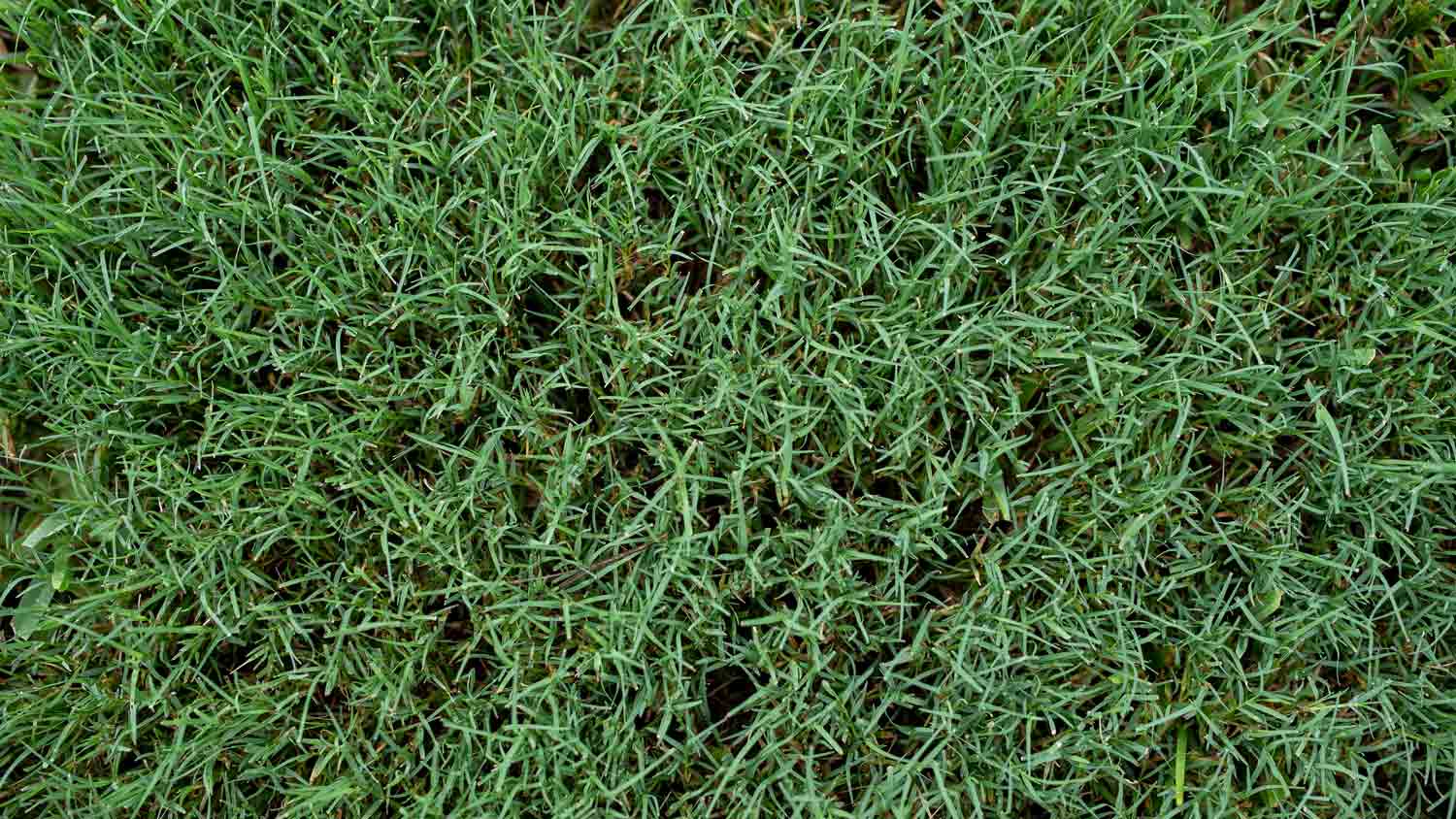
Commonly found in tropical and subtropical areas, Bermuda grass thrives in high temperatures and lots of direct sunlight. It’s perfect for homeowners who are in need of a quick-growing and sturdy lawn that can withstand a great deal of foot traffic. Since it grows so fast, though, it’ll need to be mowed frequently. If you love the look of a manicured lawn but don’t have the time to devote to upkeep, consider hiring a local lawn care professional.
Key Facts
Type: Bermuda is a popular warm-season grass.
Region: This grass is found in southern parts of the U.S. with warmer climates.
Care Tips
Soil: This type of grass thrives in slightly acidic soil with a pH of 6-7.
Sunlight: For optimal growth, this grass needs 4-8 hours of sunlight per day.
Mowing: You’ll want to mow Bermuda grass at least once a week, keeping it to a height of at least 1.5 inches.
Traffic: Thanks to its extensive root system, Bermuda can handle quite a significant amount of foot traffic.
Best for: Hot, sunny areas
8. Fine Fescue Grass
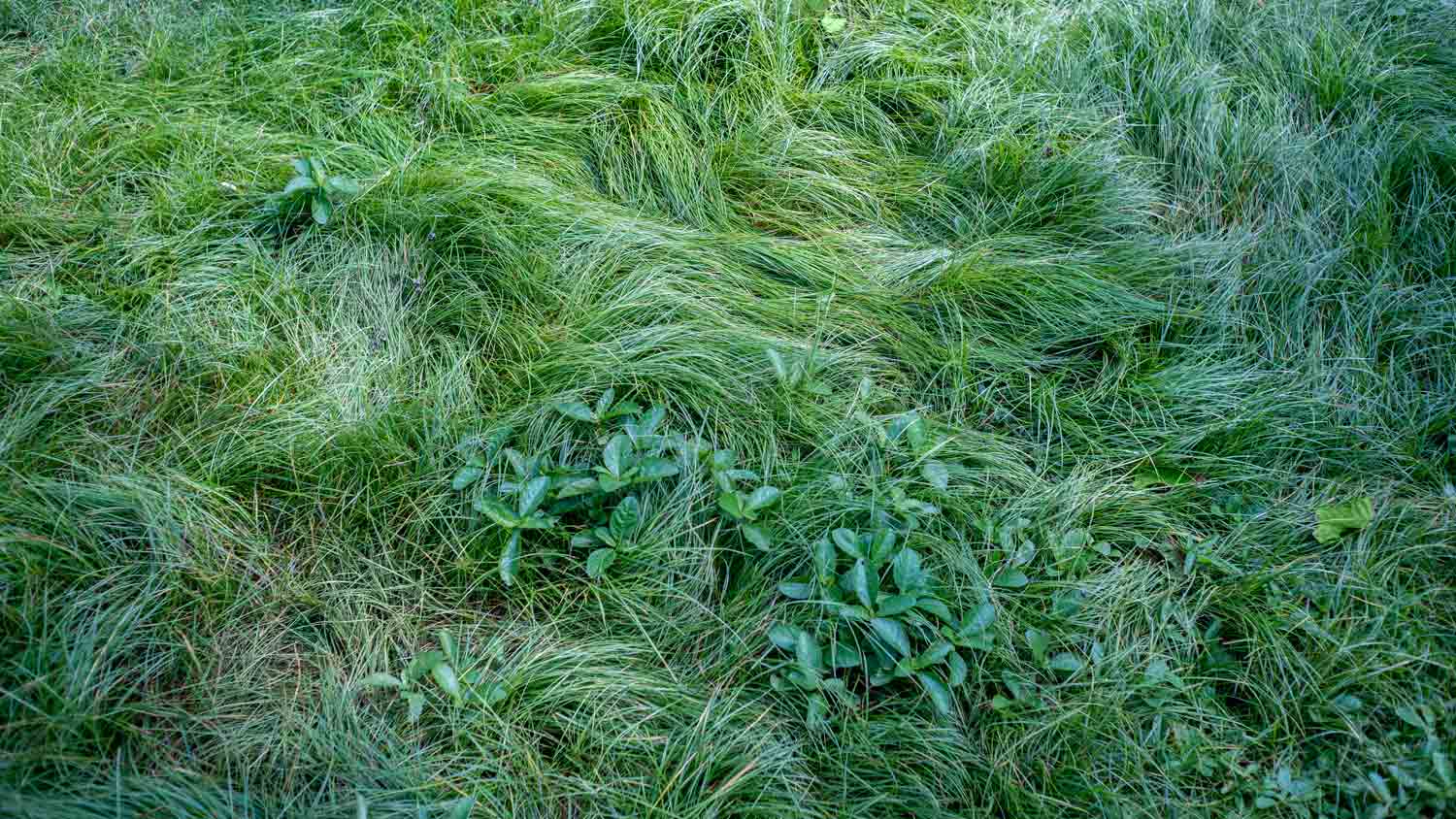
Fine fescue grass is a cool-season, low-maintenance grass that doesn’t need much mowing or watering. It’s also very shade tolerant, resistant to pests, and weeds. However, fine fescue doesn’t do well with heavy foot traffic and can be susceptible to damage.
Key Facts
Type: Fine fescue is a cool-season grass.
Region: With origins in Europe, this grass is mostly found in northern areas.
Care Tips
Soil: This type of grass needs a slightly acidic soil with a pH of 5.5-7.
Sunlight: Fine fescue can tolerate both full sun and moderate to high shade.
Mowing: Mowing fine fescue to about 2.5-4 inches can help reduce the presence of weeds. Mow less frequently during drought to avoid damaging your lawn.
Traffic: Avoid heavy foot traffic to keep fine fescue looking its best.
Best for: Shady lawns
9. Perennial Ryegrass
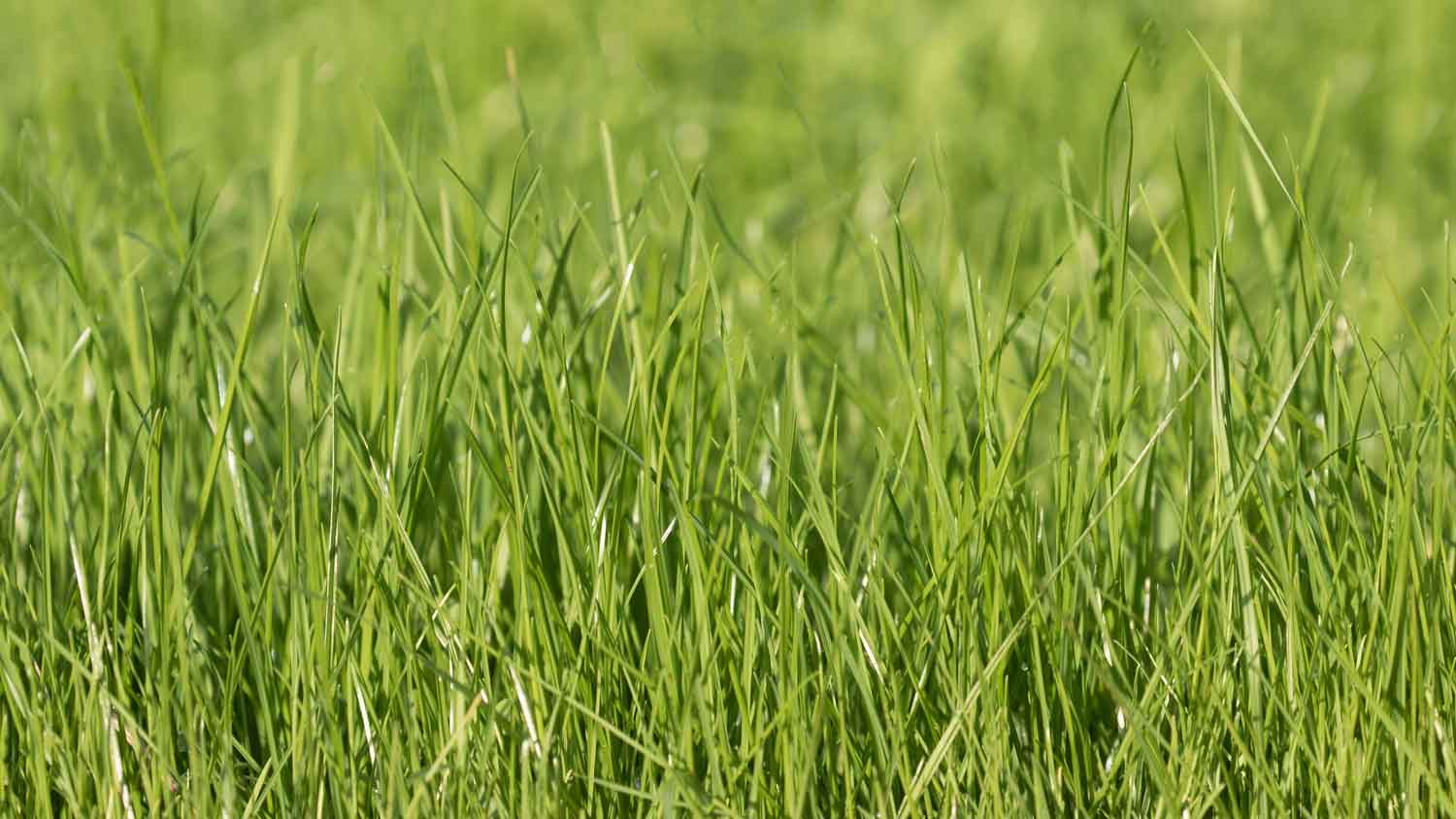
If you’re searching for a fast-growing, versatile, and hardy grass for your property, perennial ryegrass is worthy of your consideration. Ryegrass is great at fending off pests and diseases, while also being able to endure heavy foot traffic and cold, wet environments. It can also help prevent erosion on hillsides, roadways, and ditches.
Key Facts
Type: Perennial ryegrass is a cool-season grass that grows best in zones 5-7.
Region: Ryegrass is mostly found in cool, moist climates but can be used as a winter grass in warmer climates.
Care Tips
Soil: This type of grass can tolerate soil with a pH of 5-8.3, but prefers well-drained soil that’s slightly acidic.
Sunlight: The grass flourishes in direct sunlight, but can also tolerate some shade.
Mowing: Mow perennial ryegrass to a height of 1.5-3 inches. Be mindful to mow only when it’s actively growing.
Traffic: This grass can withstand heavy foot traffic because of its tough blades and root system.
Best for: Erosion control
10. Centipede Grass
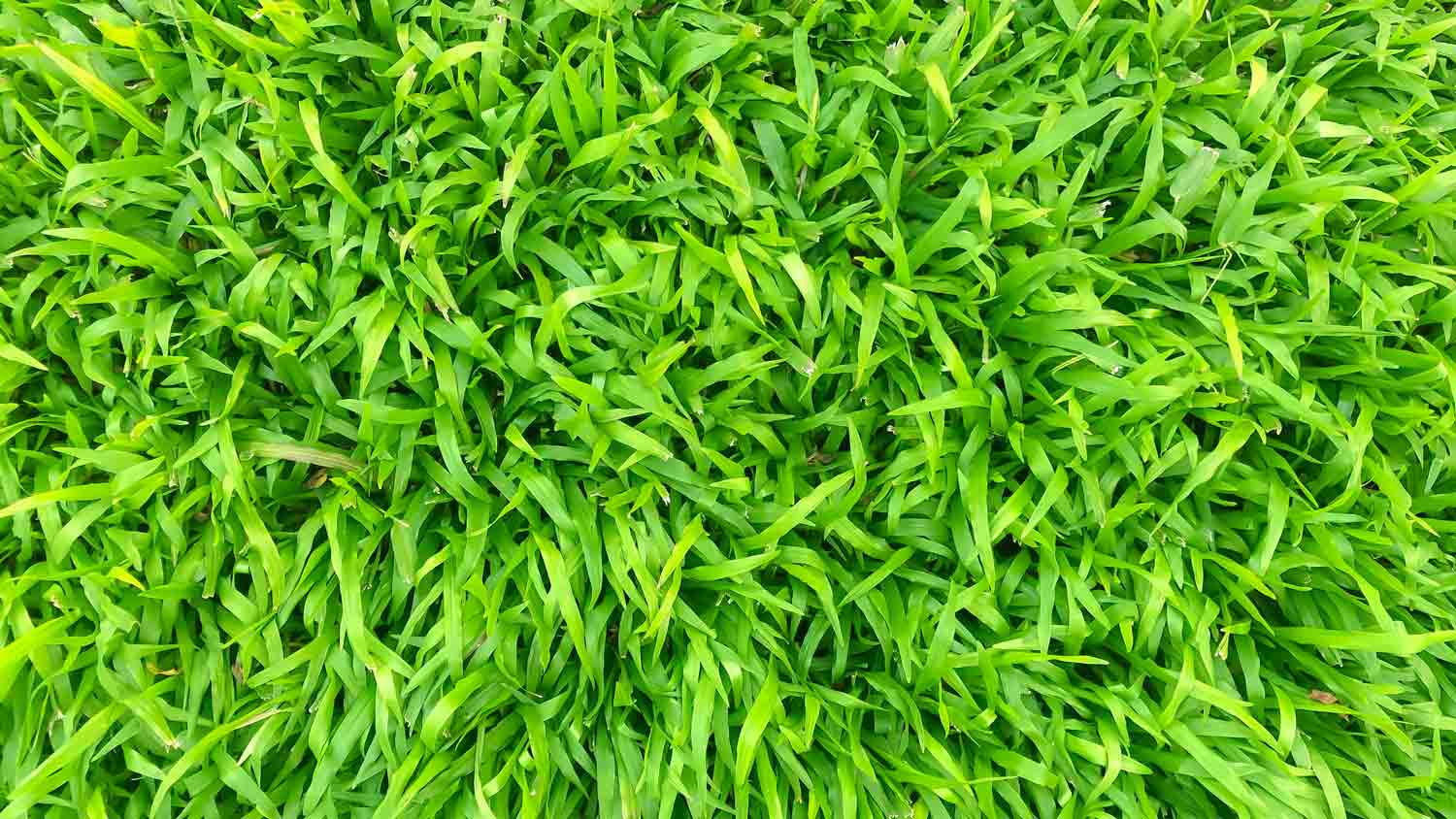
Nicknamed as “lazy man’s grass,” centipede grass can be a good choice for homeowners looking for a low-maintenance, slow-growing grass that doesn’t need much watering or mowing. While this grass thrives in areas that get at least 40 inches of rain per year, it’s quite drought-tolerant and resilient.
Key Facts
Type: Centipede grass is a warm-season turfgrass.
Region: Native to China and southeast Asia, centipede grass is found in the southeastern U.S.
Care Tips
Soil: This type of grass thrives in sandy, slightly acidic soil with a pH of 5-6.
Sunlight: While this grass can tolerate some shade, it grows best under full sunlight.
Mowing: Mow centipede grass during the spring and summer months, keeping it at a height of 1-2 inches.
Traffic: This grass cannot handle much foot traffic.
Best for: Low-maintenance, lesser-used lawns
Paige Bennett contributed to this piece.















